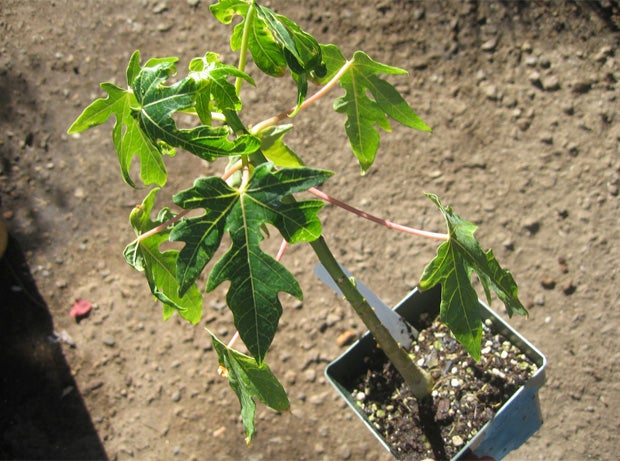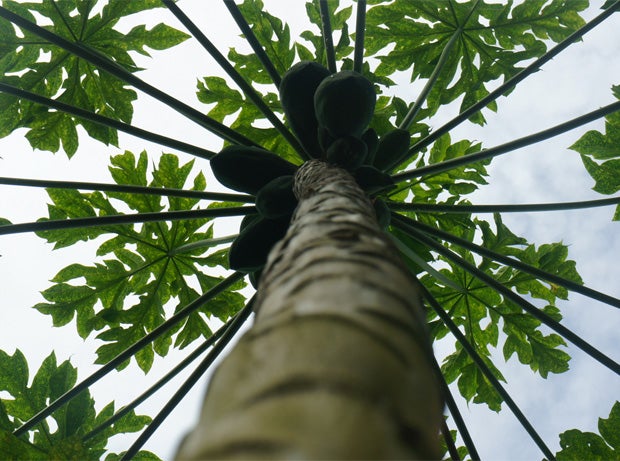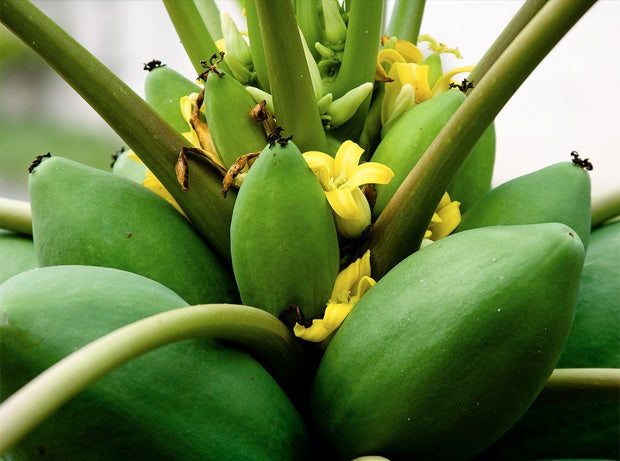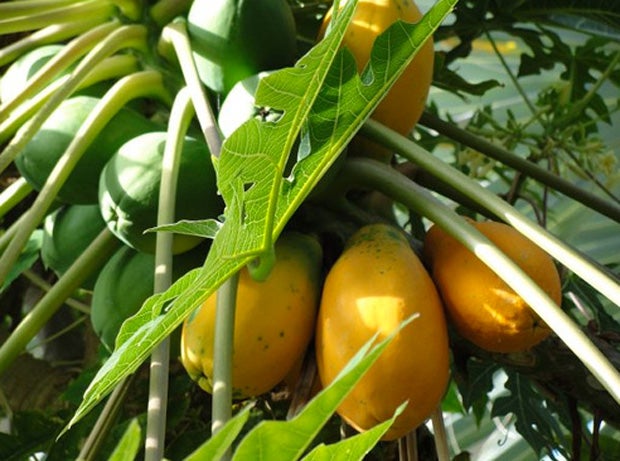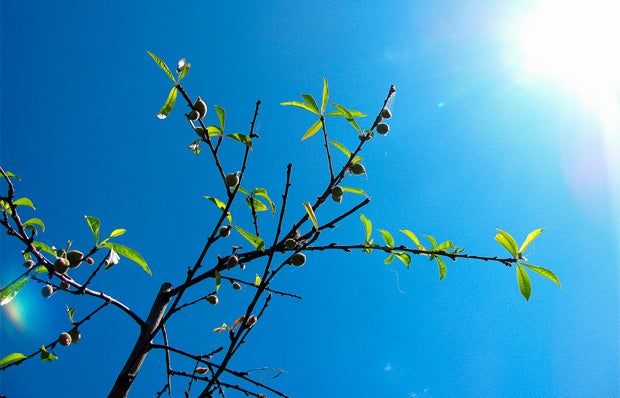Bring the tropics into your garden
ListenMike shares instructions on reviving a seriously neglected property, tips for caring for young fruit trees, and what to do when your lawn has a fungal disease called brown patch, and how to get the most out of your basil. Plus, Mike speaks with author Lauren Mandel about rooftop gardening.
Question of the Week:
“Last spring I noticed some strange ‘weeds’ in our garden. By fall they were over six feet tall, and an internet search revealed that they were papaya plants—almost certainly from our compost, as we had enjoyed papayas that spring. I potted one up and put it in our small sun room for the winter—where it grew all the way to the top of the curved glass ceiling. I am writing this in May, as I get ready to put it back out in the garden. Do you think I’ll be able to invite you over for some fresh papaya this summer?”
— Vincent, near Hammonton, NJ
How to grow papaya at home »
Slideshow below: Papaya Plants
Highlights from show for September 7, 2013:
How to revive a seriously neglected property
Mike from Spokane, Washington recently purchased a 100+ year-old home that had been sitting vacant after being seriously neglected by its previous owners. There is a garden area in the yard filled with debris and a few old, overgrown fruit trees on the property. Not knowing where to start, he calls in to ask Mike McGrath what the first steps are in reclaiming this property safely so it can house a healthy lawn, garden, and fruit tree population. Mike McGrath first recommends that his caller’s soil be tested for lead, as it’s a common contaminant found in the soil surrounding older homes. He continues on and recommends: “I would love to see you hire somebody to clear that land for you who has the equipment, who takes the correct protections; then you do the work of sealing off the soil and obtaining the new soil and building the raised beds. If you can do that, I think that’s more than enough for the first couple years while you make sure all the house is livable and safe. And then when you’re not burned out, as you’ve paced yourself, then move on into the fruit trees and the small fruits. But it sounds like those old trees should just go.”
Caring for peach trees
Vicki from Oklahoma City, Oklahoma has what she thinks are short, ornamental peach trees and asks Mike if it’s safe to eat the fruit from this tree. After getting a full description of the tree, Mike says, “I think I’ve got nothin’ but good news for you! I think you simply have a lovely peach tree, a true peach tree. And the only reason your peaches are small is there’s a couple of things you’re not doing. But I think if you follow some basic instructions, you’re going to be eating peaches this time next year.” Mike goes on to explain the basics of caring for fruit trees.
Special guest: Lauren Mandel
Mike Mcgrath talks with Lauren Mandel, author of Eat Up: The Inside Scoop on Rooftop Agriculture. Lauren is a rooftop agriculture specialist by trade and speaks with Mike about the pitfalls of creating your own rooftop garden, most importantly, finding a way to bring water to your garden and hoisting the materials for the garden itself. From farming, to animal husbandry to the average homeowners garden, roof top agriculture is taking the country by storm. .
Fighting brown patches in your lawn
Barry from Lansdale, Pennsylvania is having lawn troubles. He moved into a new house, and for the first two months the lawn looked great, but during the hot summer months, large chunks of the lawn started to die off. Mike suspects that Barry’s lawn has become victim to a fungal disease called brown patch. Mike explains that the best way to revive the lawn is proper care: “The secret to having a great-looking lawn is very simple; it should never be cut lower than three inches, when it’s watered it should be watered deeply and infrequently, and you feed it once in the fall and once in the spring.”
Getting the most out of your basil
Matt from Brooklyn, New York is looking for tips to improving the output of his basil. Mike recommends starting from seed and a high-quality seed-starting soil mix. Then he shares this trick to get the most out of the plants: “As the plants get bigger, what you want to do is you want to learn how to pinch them. You know where they form that leaf cluster with the little non-leaf thing in the center? You want to keep pinching that back, literally just with your thumb and finger. And that’ll force more leaves to grow, and it’ll also delay any flowering. But as you harvest your basil, you can cut it back once and it’ll probably regrow for you. But the smarter thing to do would be devote your container into sections and sow a new run every month.”
-

3 basil varieties (purple Greek basil, Genovese basil, purple basil) plus oregano. Photo by Flickr user Pablo Englebienne
WHYY is your source for fact-based, in-depth journalism and information. As a nonprofit organization, we rely on financial support from readers like you. Please give today.


